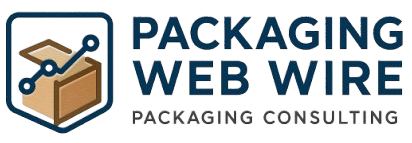The contact sensitive packaging market is undergoing a transformative surge, heading toward hundreds of millions in revenue between 2025 and 2034. Spearheaded by technological innovation and sustainable solutions, this market is reshaping the packaging industry across healthcare, food and beverage, and e-commerce.
Market Overview
Contact sensitive packaging refers to packaging materials designed to come in direct contact with sensitive goods such as medical devices, pharmaceuticals, cosmetics, food, and hazardous materials. These materials must meet strict safety and compliance standards. Notably, they are often exempt from recycled content mandates due to the nature of their applications.
Invest in Our Premium Strategic Solution: https://www.towardspackaging.com/download-databook/5645
In 2024, North America dominated the global landscape. The region’s lead is attributed to the presence of advanced healthcare infrastructure and a strong pharmaceutical sector. Pressure-sensitive labels and aluminum foil emerged as the most popular packaging formats. From 2025 onwards, Asia Pacific is poised for rapid expansion, thanks to increased industrialization, technological innovation, and growing demand in the healthcare and logistics sectors.
Emerging Market Trends
Integration of RFID and NFC Technology
There is a noticeable shift towards embedding RFID and NFC tags in packaging. These technologies support real-time supply chain tracking, anti-counterfeiting measures, and interactive customer engagement. As industries push for greater transparency and safety, smart packaging solutions are becoming essential.
Get All the Details in Our Solutions – Access Report Preview: https://www.towardspackaging.com/download-sample/5645
Sustainability as a Core Focus
Sustainable materials are at the forefront of industry innovation. Brands are moving away from traditional packaging components and embracing biodegradable, compostable, and recyclable alternatives. Regulations and eco-conscious consumers are driving this trend.
Customization and Digital Printing
The demand for personalized packaging is accelerating. Digital printing technologies enable manufacturers to offer custom designs and region-specific packaging, enhancing brand identity and consumer appeal.
Role of Artificial Intelligence in Packaging
Artificial intelligence is playing a pivotal role in enhancing packaging quality and efficiency. Key contributions of AI in this market include:
-
Real-Time Quality Monitoring: AI-powered sensors collect and analyze data to maintain product integrity, especially for pharmaceuticals and healthcare goods.
-
Shelf-Life Prediction: Machine learning algorithms forecast product longevity, helping maintain freshness and safety.
-
Production Automation: Repetitive tasks are automated, boosting productivity and reducing human error.
-
Packaging Design Optimization: AI enables custom packaging tailored to consumer needs and market trends, reducing material waste and overproduction.
If you have any questions, please feel free to contact us at sales@towardspackaging.com
Market Dynamics
Key Drivers
-
Growing Industrial Demand: Innovations in pharmaceuticals and healthcare packaging continue to fuel demand.
-
E-Commerce Growth: The rise of online shopping necessitates tamper-proof, traceable, and durable packaging.
-
Sustainability Pressure: Regulatory guidelines and consumer preferences push brands toward eco-friendly alternatives.
Major Restraints
-
High Production Costs: Advanced packaging solutions require costly materials and technologies, hindering adoption in cost-sensitive markets.
-
Limited Scalability: Access to smart labels and sustainable inputs remains uneven, especially in developing economies.
Emerging Opportunities
-
Regulatory Evolution: Legislation supporting the use of smart technologies like RFID and QR codes is expanding.
-
Innovation-Driven Growth: Customization and new materials are encouraging companies to invest in research and development.
Segmental Insights
Packaging Type
-
Pressure-Sensitive Labels led the market in 2024 due to their ease of use, versatility, and compatibility with various surfaces including glass, metal, and plastic.
-
Cold-Form Blister Packaging is expected to grow rapidly between 2025 and 2034, driven by pharmaceutical needs for high-barrier, moisture- and light-resistant packaging.
Material Type
-
Aluminum Foil dominated in 2024 for its excellent barrier properties and widespread use in food and pharma.
-
Plastic Films (BOPP, PET) are set to expand significantly due to their flexibility, durability, and cost-efficiency.
End-Use Industry
-
Food and Beverages held the largest market share in 2024, thanks to rising demand for product traceability, extended shelf-life, and branding.
-
Healthcare and Pharmaceuticals will likely experience the fastest growth due to strict packaging regulations and the necessity for temperature- and pressure-sensitive containment.
Regional Insights
North America
The region led globally in 2024 due to a robust pharmaceutical infrastructure, a growing elderly population, and stringent healthcare regulations. E-commerce giants and technological advancements in the U.S. continue to propel market demand.
Canada
Strict compliance standards and a shift towards organic packaging solutions are driving the adoption of contact sensitive solutions across healthcare and food sectors.
Asia Pacific
This region is projected to witness the highest growth from 2025 to 2034. Countries like China, India, Japan, and South Korea are leading investments in R&D and expanding their e-commerce ecosystems, which creates substantial demand for high-performance packaging solutions.
Recent Industry Developments
-
April 2025: Berry Global unveiled a new PCR plastic polymer tailored for non-contact-sensitive applications in the homecare and industrial sectors.
-
January 2025: The European Union introduced updated regulations under the Packaging and Packaging Waste Regulation (PPWR), reshaping the recycling and packaging industries.
-
May 2025: CEFLEX assessed five leading recycling technology classes to support sustainable packaging innovations.
Final Thoughts
The contact sensitive packaging market is not just growing—it’s evolving. With advances in AI, smart technology integration, and sustainability, the industry is rapidly adapting to meet global needs. From pressure-sensitive labels to cold-form blister packs, manufacturers are innovating at every step to create packaging that is not only protective but also smart and eco-conscious.
Source : https://www.towardspackaging.com/insights/contact-sensitive-packaging-market-sizing


